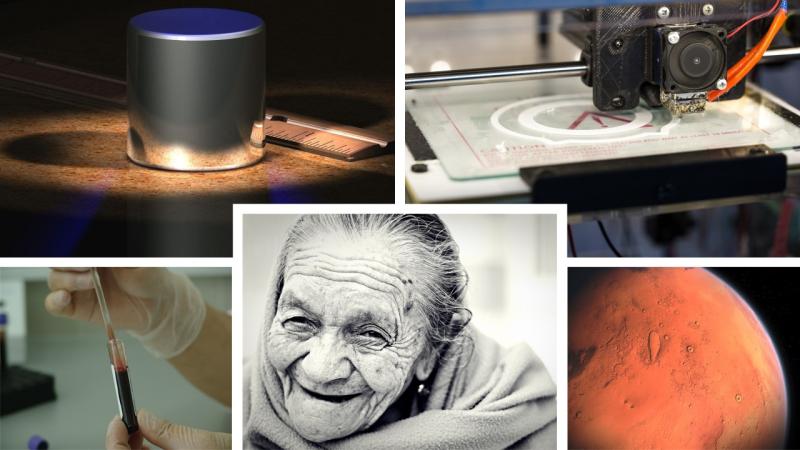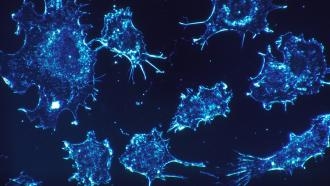
The year 2018 was marked by exciting discoveries and inventions in the field of medical sciences, life sciences, archeology, physical sciences, and planetary sciences. While some are headline-hitting, most are crucial in cementing our understanding of various tenets in these areas. As we come close to bidding goodbye to 2018, here is a sneak-peek into the trendsetters in science in this year, in no particular order.
1. Detecting cancer from blood
Cancer, the second most deadly disease caused by uncontrolled cell growth, killed almost 8.9 million people worldwide in 2016. Although detecting cancer early on is the key to saving lives, diagnostic tests are often expensive, take time or are simply not available for certain cancers. Researchers at the John Hopkins Kimmel Cancer Centre, USA, have invented a novel blood test to detect eight common cancers, including ovarian, liver, lung and pancreas cancers by analysing cancer-related proteins and DNA in the blood. This breakthrough could soon lead to a screening device that can detect tumours before they turn fatal.

Credit: CC-0 Creative Commons
2. The recalibration of the kilogram
For the past 130 years, a sleek, platinum-iridium cylinder, called Le Grand K, in Paris, defined what a kilogram is. This year, 60 nations voted for a change in this definition of the SI unit, choosing to do away with physical artefacts and instead, rely on physical constants of nature like the Planck's constant and the speed of light. Starting May 20, 2019, the kilogram will be defined by the amount of electric current needed to produce a magnetic field strong enough to balance a mass of one kilogram. The vote also included changes to measuring the ampere, for electrical current; the Kelvin, for temperature; and the mole, for the amount of a chemical substance.

Credit: User: Greg L via WikiCommons, CC-BY-SA-3.0
3. Lab grown and 3D-printed body parts
The year witnessed some significant efforts towards lab-grown and custom-printed body parts. In the UK, scientists reported completely growing the first-ever human egg in a lab—an accomplishment that could aid fertility treatments. Meanwhile, researchers in the USA grew the first human esophageal tissue entirely from stem cells. With advances in 3D printing and biocompatible inks, the first ever human cornea, the transparent outermost layer of the eye helping in focusing our vision, was printed in less than 10 minutes! This feat could result in an unlimited supply of corneas, annually saving about 5 million people from corneal blindness.

Credit: CC-0 Creative Commons
4. Cracking the wheat genome
The mammoth effort of 13 years by 200 scientists from 20 countries culminated in successfully decoding the genomic structure of wheat (Triticum aestivum) in 2018. The endeavour, spearheaded by the International Wheat Genome Sequencing Consortium (IWGSC), presents the location of 107,891 genes and more than 4 million genetic markers. With 94% of the genome covered, it is by far the best reference genome of wheat available till date. This data serves as a handy tool for scientists to develop high-yielding, disease-resistant and drought-tolerant varieties of wheat.

Credit: CC-0 Creative Commons
5. Unraveling the puzzle called Alzheimer’s
Worldwide, nearly 50 million people suffer from Alzheimer’s or related dementia. This year, there have been significant headways in understanding and treating this cognitive disorder. Scientists have used cell therapy to improve brain functions impaired by the disease in mice. Cell therapy is a technique to replace or repair damaged cells with healthy cells. In another effort, scientists have reversed Alzheimer’s in mice by blocking an enzyme known to cause plaques in the brain. Closer home, scientists at IISc have developed a novel approach to detect the onset of Alzheimer’s by monitoring the levels of certain proteins.

Credit: CC-0 Creative Commons
6. The first human hybrid
In what could be a new perspective in understanding human evolution, scientists in Siberia have discovered the fossil remains of the first ever known human hybrid—a girl whose mother was a Neanderthal and the father was a Denisovan. Neanderthals and Denisovans are extinct groups of hominins that separated from each other more than 390,000 years ago. Analysis of the DNA of the fossil showed that the Neanderthal mother was closely related to Neanderthals who lived thousands of miles to the west in what is now Croatia. The discovery throws light on the possible diversity in humans and their migration patterns.

Credit: CC-0 Creative Commons
7. An elixir to ageing
We have long feared the process of aging. From fables to fiction to numerous commercials, we encounter many ‘magic potions’ that supposedly ward off aging and keep one young. Although in reality, this may still be a far-fetched dream, researchers at the Harvard School of Medicine report to have reversed the process of aging in mice. They have discovered a molecule called nicotinamide mononucleotide that can reactivate the flow of blood in tissues and organs by forming new blood vessels. Thus, these cells are supplied with required oxygen for their functions, warding off the process of aging.

Credit: CC-0 Creative Commons
8. The quest for exoplanets
With the launch of NASA's Transiting Exoplanet Survey Satellite in April 2018, our search for exoplanets—planets beyond our Solar System—has taken a whole different meaning. Following the footsteps of the Kepler telescope, TESS will survey far more number of stars and try to find planets that orbit them. So far TESS has identified at least 73 stars that may harbor exoplanets, most of them new to astronomers. Also, scientists have provided more evidence to the existence of extragalactic planets beyond the Milky Way and that most have water in some form in them.

Credit: CC-0 Creative Commons
9. Swimming nanomotors in our body
The world is on a look-out for innovative approaches to target specific cells in our body to treat diseases like cancer. In one such approach, researchers at the Indian Institute of Science, Bengaluru, been quite successful with their tiny nanomotors. These nanomotors, about the size of a billionth of a metre, can swim inside our body and either deliver a cargo of drugs to various destinations, or use their magnetic fields as a lightsaber to kill cells. As they can be maneuvered using a magnetic field, the researchers have also tried to circulate them inside live cells.

Credit: CC-0 Creative Commons
10. The launch of InSight
On November 26, 2018, the world woke up to the news of InSight, a Mars mission, landing successfully on the Red Planet. Launched in May, it travelled 483 million kilometers before reaching the equator of the planet. The Interior Exploration using Seismic Investigations, Geodesy and Heat Transport (InSight) mission is designed to study the interiors of the planet and its geological history. It has a seismometer to measure seismic activity and a heat probe to measure the internal heat flow. Scientists hope that the data from InSight could provide a new understanding about the evolution of other terrestrial planets in the Solar System.

Credit: CC-0 Creative Commons
Note: All images are for representative purposes only.






